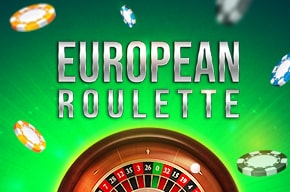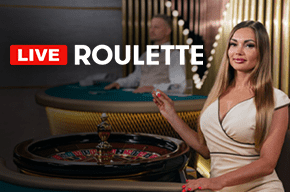Blackjack Surrender is a multi-hand blackjack variant from Playtech that allows players to command up to five positions. It is played with six decks of 52 cards and has an RTP of 99.66%. Furthermore, players can benefit from the 21+3 side bet that has an RTP of 95.38% and the Player/Dealer Perfect Pairs side bet which has an RTP of 93.89%. Have a read through our Blackjack Surrender guide to learn more about the popular blackjack variant.

How to play Blackjack Surrender
Blackjack Surrender is one of the easiest games to play. To win, players must try and get as close to 21 as possible. Any hand that exceeds 21 automatically loses. This is known as ‘going bust’. If the player’s hand is stronger than the dealer’s hand, they win. If the player’s total and dealer’s total are the same, the player’s stake is returned as a push.
All numbered cards keep their face value whilst picture cards (Jack, Queen, King) are worth 10. Aces can be worth either 1 or 11. The strongest hand in Blackjack Surrender is ‘Blackjack’, which is formed from a 10-value card and an Ace. Blackjack defeats all other hands, including a hand that totals to 21, except another Blackjack. If both the dealer and player have blackjack, the round ends as a tie and the player’s stake is returned as a push.
To start a round of Blackjack Surrender, the player must place set their stake using chips that are found on the left-hand side of their screen. Once the player places their stake on at least one of the five positions, they will be able to start the round by clicking on the ‘Deal’ button. The dealer will then serve two face-up cards to the player and take a face-up and face-down card themselves.
If the dealer is revealing an Ace, the player can place an ‘Insurance bet’. This costs half the player’s initial stake and pays out if the dealer has Blackjack. The payout for the insurance bet is 2:1, essentially returning the player’s stake. If the dealer does not have Blackjack, the round continues as usual.
Once the cards have been dealt, the player will have the option to choose one of the following actions:
- Hit – when choosing to hit, the player will receive an additional card. There is no limit on how many cards the player can receive but they must be cautious not to go bust.
- Stand – when choosing to stand, the player is happy with their hand and does not take any further action. The round proceeds to the next position or back to the dealer’s hand.
- Double – when choosing to double, the player takes a single extra card and immediately stands. In doing so, the player also doubles their stake. The player can double on any hand, even after splitting cards.
- Split – when choosing to split, the player has received two cards with the same value and has separated them into two hands. In doing so, the player has also doubled their stake. It is possible to split on any pair, however, splitting Aces means only taking a single additional card. A 10-value card on a split Ace counts as 21, not Blackjack.
- Surrender – when choosing to surrender, the player has received their initial two cards and can choose to abandon their hand. In doing so, the player will claim back half of their initial stake. The player can only do the late surrender after receiving their two initial cards and not after performing one of the actions above.
In Blackjack Surrender, the 7-card Charlie rule is applicable. If the player can draw up to seven cards without going bust, they automatically win, regardless of their total. The 7-card Charlie rule will win most times but does not defeat a dealer Blackjack. It is also possible to win a seven-card Charlie on a split hand.
Blackjack Surrender uses the same standard payouts as most blackjack variants. If the player’s hand is stronger than the dealer’s, the dealer goes bust or the player has a seven cards, the payout is 1:1. If the player has Blackjack, the payout is 3:2. The dealer will always hit on 16 or lower and stand on 17 or higher.
Blackjack Surrender Side Bets
In Blackjack Surrender, there are also two popular side bets that can be placed. The side bets include Player/Dealer Pairs and 21+3. Below, we have clarified these side bets in greater detail.
Player/Dealer Perfect Pair
Before every round, the player can place a bet on the Player Pair and Dealer Pair side bets. Essentially, this side bet pays out if the player’s cards are a pair or the dealer’s cards are a pair. Depending on the type of pair that the position holds, the payouts will vary.
- A Mixed Pair is when the two initial cards have the same value but different colours. If the player or dealer’s pair has a black and red card, the payout is 6:1.
- A Coloured Pair is when the two initial cards have the same value and same colour but different suits. A combination of hearts and diamonds or clubs and spades qualify as a Coloured Pair and pays 12:1.
- A Perfect Pair is when the two initial cards are identical. If the player or dealer’s pair is identical, the Perfect Pair pays out 25:1 times your stake.
21+3
The 21+3 side bet is formed by combining the player’s two initial cards and the dealer’s face-up card. If the trio of cards can form one of the following combinations, the side bet pays out:
- Flush – three cards that have the same suit pays 5:1
- Straight – three cards in consecutive order pays 10:1
- Three of a Kind – three cards that have the same value pays 30:1
- Straight Flush – three cards in consecutive order that have the same suit pays 40:1
- Suited Three of a Kind – three identical cards pay 100:1
To Conclude
Learning how to play Blackjack Surrender is incredibly straightforward. As the late surrender option is available to players, it is advised to learn when to surrender your hand as you can claim back half of your initial stake when you do not believe your cards will beat the dealer’s. Blackjack Surrender is one of the most exciting multi-hand blackjack variants on the internet and also features the Player/Dealer Pairs and 21+3 side bets.
 How to Bet on Fortnite with Galera Bet
How to Bet on Fortnite with Galera Bet An Introduction and Betting Guide to the X Games
An Introduction and Betting Guide to the X Games Spin for Scarily Big Halloween Wins at Galera Big
Spin for Scarily Big Halloween Wins at Galera Big What is the Esports World Cup?
What is the Esports World Cup? The Most Popular Esports of 2024
The Most Popular Esports of 2024 Adam C.
Adam C. Joseph O.
Joseph O. Diogo F.
Diogo F. Lucas A.
Lucas A.